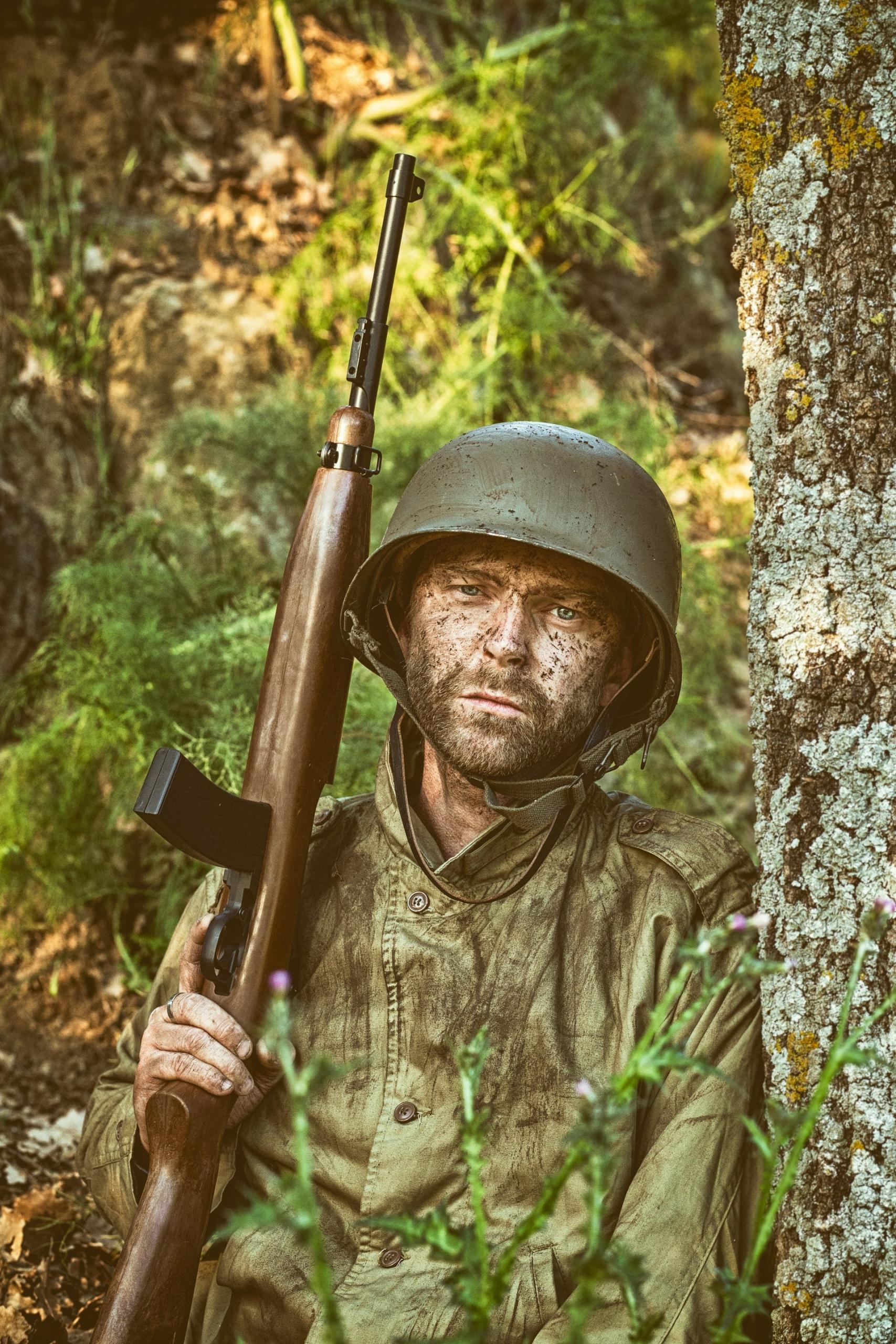Nettles is a GCSE-set poem by Vernon Scannell that explores a father’s protective love for his son through the metaphor of nettle stings. Using simple language and vivid imagery, the poem reflects on the pain children face growing up, the limits of parental protection, and deeper themes of war and violence influenced by Scannell’s own experiences. Understanding the poem’s context, form, and themes helps students analyse its meaning effectively for their GCSE exams.
In this article, we explore Vernon Scannell’s poem Nettles, focusing on its themes of parental love, pain, and war, while also examining the poet’s background and how the poem’s simple language and structure convey deeper meanings, helping GCSE students prepare strong exam answers.
| Category | Note | Interpretation | Effect |
|---|---|---|---|
| Context | Vernon Scannell was a WWII veteran; his experiences with conflict and hardship shape the poem’s focus on parental protection, violence, and inevitability of pain. | The poet’s military past informs the war metaphors and tone of conflict in the poem. | Creates authenticity and emotional weight; shows a personal link to themes of protection & pain. |
| Form and Structure | Single 16-line stanza; regular ABAB rhyme; steady iambic pentameter; volta at line 9; cyclical ending reflecting recurring challenges. | Regularity contrasts the chaos of pain; volta shows emotional shift. | Emphasizes inevitability of pain and futility of total protection. |
| Themes | Parental love, inevitability of suffering, innocence vs. harsh reality, cycles of harm. | Love drives the father’s actions; suffering is presented as unavoidable. | Encourages empathy; highlights universal parental fears. |
| Language | War imagery, violent verbs, oxymorons like “nettle bed,” personification, sibilance & plosives adding aggression. | Nettles become soldiers, pain becomes a battle; oxymorons show mixed emotions. | Makes child’s injury feel like an attack; intensifies emotional impact. |
| Perspective | First-person dramatic monologue from father’s point of view; reflective and emotional tone. | Shows the father’s internal struggle and sense of helplessness. | Creates intimacy; helps reader connect with father’s feelings. |
| Key Quotes | “My son aged three fell in the nettle bed.”; “That regiment of spite behind the shed.”; “White blisters beaded on his tender skin.”; “I lit a funeral pyre to burn the fallen dead.”; “My son would often feel sharp wounds again.” | Quotes show vulnerability, anger, and futility. | Provide strong textual evidence; can be used to support analysis in exams. |

Vernon Scannell Nettles: What is it about?
The poem is a reflection on the speaker's relationship with his young son, and how they handle the sting of nettles while working in the garden together. The poem describes the physical pain of the nettle stings and the emotional pain of their relationship.

The poem uses imagery to create a vivid picture of the nettles and the pain they inflict.
The speaker reflects on how he used to be able to handle the nettles, but now he is older and more fragile.
He also reflects on how he is teaching his son to handle the nettles with care and how the nettles are a metaphor for the emotional pain in their relationship.
The nettles actually symbolise the difficulties and challenges of life, and the father and son's relationship symbolises the cycle of life and the passing of knowledge and experience from one generation to the next.
Understanding the Context of Nettles by Vernon Scannell
🕊️ Scannell's life
👨👦👦 Fatherhood in the poem
📜 Historical background
One thing that separates students who achieve a top grade in the poetry section of the GCSE exam is their understanding of the poem and the poet. Being able to craft compelling arguments with reference to the text while demonstrating your knowledge of the poem is ultimately what examiners reward, and how effectively the poet does it is what examiners reward with high marks.
Scannell's life and war experience
If you take just one thing from this article, let it be this. Incorporating a sufficient study of a poet’s life and background is an essential element of the revision process. In this case, it’ll go a long way in adding to your understanding of life and war experience, gaining further context of the poem. Outside of that, regardless of what question appears for you on the day, you’ll be equipping yourself with plenty of points that you can weave into your essays, communicating to the examiner that you know your stuff. So, open a new page in your GCSE English notes copy and make sure to jot down some of the following point to mention throughout your essay. War left deep trauma on Scannell, seeing as he saw his fellow soldiers loot dead bodies near Gabes.
Nettles does a great job of showing just how this sight disgusted him so much that he deserted and faced a court-martial. Because of this, the military prison held him for six months until his release to join the Normandy landings. The series of unfortunate events continued for Scannell, he would later be left with wounds in both of his legs from a night patrol near Caen. He deserted again after V.E. Day, thinking his service was complete. Only this time, he spent two years hiding from authorities while he went into what we millennials would describe as ‘monk mode’, focusing all of his time on writing and boxing.

Knowing this, its impact on his writing will most certainly be more evident when you read the piece through. You may even be able to pick out a number of metaphors yourself that stand out to you, contributing to a more personal argument that other students may not have in their answers. This is the kind of critical thinking that examiners are always on the lookout for, so you can see how knowing about the poem’s context can position you for success inside the exam hall.
The role of fatherhood in the poem
Another great point that can easily find its way into most of the essays you’ll be tasked to write on this GCSE classic is how Parental love and protection stand at the heart of it.
Scannell was a father of six, and personal grief evidently runs deep, seeing as she tragically lost two children, one as a baby and another in a motorcycle crash.
Any high-level answer will surely mention how loss makes the protective instinct in the poem more powerful, showcasing a father's fierce response to his child's pain. Of course, you’ll need to make reference to the text. So, mentioning how both parents comfort their son ("We soothed him"), but the father takes aggressive action against the nettles is a great way to make this link. It mirrors the expected role of fathers at that time as family protectors and defenders. The angle of the poem shows that parents can't shield their children from every hurt life brings is an important one when discussing the context of the poem.
Historical and Social Background
While no GCSE student will have been around at the time, the poem does a great job of bringing the reader back to 1980. This is when Nettles was written, a time when Cold War tensions ran high and traditional gender roles held strong.
Throughout this time, society saw fathers as the sole family leaders who provided money, guidance, and protection. People glorified violence as a male trait, much like they praised war itself and labelled men who wouldn't fight as cowards. This context serves to fill a number of gaps that may have surfaced in your initial reading of the poem and provides an explanation for many of the powerful metaphors that fill the poem, such as "regiment of spite" and "tall recruits". Having seen the horrors of war first-hand, Scannell's poem speaks against war, something that becomes more evident through our study of the context of Nettles.

Nettles Analysis of Form and Structure
🎶 Cross rhyme
4️⃣ Quatrain
✍️ Stanzas
The poem is a single stanza of four cross-rhymed quatrains. Each line is written in very regular iambic pentameter: lines of ten syllables with five stressed beats alternating with unstressed beats. Only a single line (‘And went outside and slashed with fury with it) breaks the pattern of ending on a stressed syllable – sometimes called a ‘feminine’ ending.
When iambic pentameter is used so regularly, it achieves a very steady, relentless rhythm, helped here by the simple rhyme scheme abab.
This is a stark contrast to another of the GCSE poems, Praise Song For My Mother, which takes a very free approach to its rhyming and rhythm.
Cross rhyme - A rhyme pattern alternating line endings, so that the first line rhymes with the third, and the second with the fourth, often notated abab and actually much simpler in practice than explanation! Also one of the most common regular rhyme patterns.
Quatrain - Four lines rhyming together and acting as one unit of a verse. Not necessarily grammatically complete or set apart as their own stanza.
Stanza - A number of lines of verse laid out together on the page and separated by empty lines from the remainder of the poem. This is chiefly a matter of a poet’s personal taste as well as visual appeal.
This is another decision to relate the story in simplicity and most of the rhyme words are monosyllables with simple, everyday meanings – shed, bed, tears, skin.

It is fair to say that in many different ways the poem itself is simplistic, and this could even be a way for the poet to reflect the naivety and simplicity he desires to get across as his message to the reader.
The form and structure of the poem involves the following, so it is helpful to get a basic understanding of what they mean.
Exploring the Key Themes in the Poem Nettles
👨👩👧 Parental Love and Protection
🩸 Pain and Healing
⚔️ War and Violence
When you're preparing notes to guide your revision during the lead up to the GCSE English exam, you'll want to set aside some flashcards covering some of the core themes in Nettles. We've put together some of the core themes and even went to the lengths of adding how they can be used to strengthen your answer.
Parental Love and Protection
You can bank on themes appearing in one way, shape or form in your GCSE poetry section, so you’ll need to be sure to incorporate themes into your revision plan. Parental love is a great one to start with, as it’s almost hard to ignore in Nettles, as the poem shows us just how much parents want to protect their children. The narrator grabs "a hook and honed the blade" and slashes "in fury" after seeing his son's pain.
The poem may be written from the perspective of hardship, strife, and even pain, being necessary evils. "It was no place for rest" is an example of the hard-nosed attitude towards the pain his son was experiencing.
This emotional response shows a parent's drive to keep their child safe, yet they know complete protection isn't possible. You could also mention how both parents "soothed him till his pain was not so raw." If you really want to impress the examiner and be sure that your essay stands out among other GCSE students, you could throw in how this creates an oxymoronic image where pain and joy exist together as they comfort their son, even though they can't undo the harm.
The Cycle of Pain and Healing
Another key theme that you’ll need to tackle in your essays is the cycle of pain and life's unavoidable hardships. There’s plenty of ammunition that you could throw at your essay for this one. Mentioning how the parent destroys the nettles completely, but "two weeks the busy sun and rain had called up tall recruits behind the shed" should serve as the focal point of your argument. This pattern shows that children will "often feel sharp wounds again."
Through this theme, the poems express that children face hardships while growing up, offering a sad reminder that the protection of a parent is limited, no matter how much one might try.
War and Violence
The elephant in the room would of course be the theme of war and violence, a theme that you can weave into any question that tasks you to analyse the poem.
Make sure to tie this into your analysis effectively by using some of the following metaphors: "regiment of spite," "green spears," and new "tall recruits" after being cut down.
The theme of war and violence is evidently tainted from Scannell's traumatic experiences in World War II, which we touched on in our discussion of the poem’s context. We see this in the father's violent reaction when slashing with "fury" and burning the "fallen dead" on a "funeral pyre", mirroring war's brutality, yet nature persists regardless.
Language
In fact, it’s worth noting that Scannell achieves quite a nuanced, subtle perspective with only the simplest vocabulary. In the 137 words, there is only a single word of three syllables – ‘regiment’. Almost all of the others are ‘core vocabulary’ – everyday words. This contrasts with another of the GCSE syllabus poems, Kamikaze, which paints a picture with more complex language and description.
By mixing in a few pieces of military language – ‘spears, regiment, parade, recruits’ and ‘wounds’ – he dresses the mundane event in a light metaphor that encourages us to rethink the meaning of other words. The image of the father ‘honing the blade’ becomes more vengeful, and more intentionally violent, in the context of this language.
Symbolism in poetry is the use of symbols, objects, or elements to represent deeper meanings or ideas beyond their literal sense. It allows poets to convey complex themes through imagery that resonates on multiple levels. In Scannell's case, phrases like 'honing the blade' and words like 'regiment' create this military symbolism.
The rhyme is large of the simplest kind: short, common monosyllables rhyming with ‘friendly’ words. In one place, an unstressed pronoun (‘slashed in fury with it’) rhymes with a stressed verb ‘lit’, perhaps giving a sense of release from effort that chimes with the frantic slashing. There is also an internal line between ‘took’ an ‘hook’, which simply brings those words to our attention. Note that the father is probably using a billhook to hack the weeds, rather than a scythe, as some notes comment.

Furthering Your Understanding of Nettles by Vernon Scannell
Using only the simplest language and poetic tools, Vernon Scannell creates a sequence of focused visual images with subtle overtones of much deeper themes. You might describe such poetry as ‘deft’ or ‘workmanlike’ and be able to back up your opinion with any of the points above. The poem is not supposed to be overly challenging to understand, and it is contemporary in its use of language.
Need an extra hand with your English? Why not book a private GCSE English tutor to come to your home from the Superprof website? We can help with analyses of further poems on the GCSE syllabus, including The Yellow Palm, Praise Song for My Mother, My Last Duchess, and Medusa
















